Kirubakaran a Review on Gasification of Biomass Renewable and Sustainable Energy Reviews
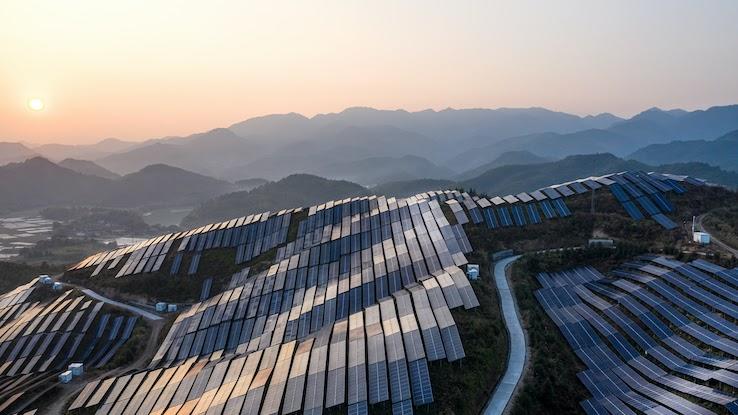
Renewable energy is energy that comes from the earth and has the ability to replenish itself naturally. This kind of energy is sustainable, significant information technology nearly never runs out because the sources it comes from replenish constantly. That being said, it can accept some time to restore usable levels of renewable energy after depleting a sure amount of information technology.
1 of the greatest benefits of renewable energy sources is that they're much better for the surroundings than nonrenewable resources similar gas and coal. Most produce no greenhouse gas emissions, the primary driver of climate change. They tin also reduce certain kinds of air and water pollution, which is better for our health and the health of our planet overall.
There are vi major sources of renewable energy: solar, wind, hydroelectric, geothermal, biomass and ocean (or tidal) energy. They're all inexhaustible sources of energy because they rely on conditions and other natural phenomena. Developing them throughout the world has the potential to create millions of jobs while saving the planet at the same time. In the long run, they're too much more cost-effective than using nonrenewable resource.
Solar Energy
Solar power is a renewable energy resource that comes from the dominicus. It works by capturing the sun's free energy with solar cells on solar panels and turning it into electricity or heat. When solar panels gather calorie-free from the sunday and turn it into free energy, they store this energy in batteries that people can apply to power appliances and other systems in their homes.
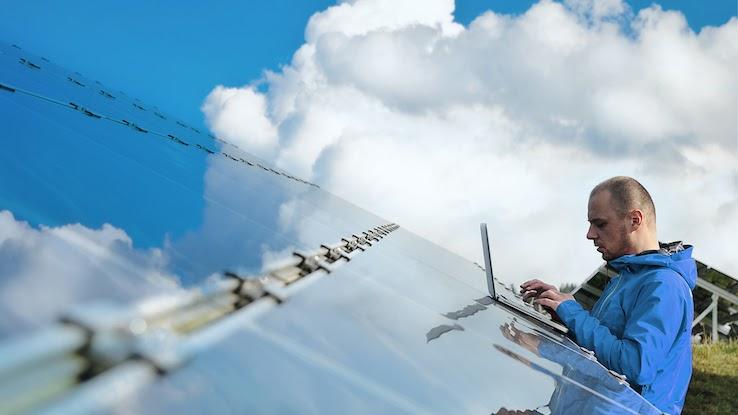
Sunlight is functionally never-ending, so at that place's no limit to its potential for generating energy. Solar power does not produce carbon dioxide or other air pollutants, making it very beneficial for the surroundings. In the long term, switching to solar energy also saves people money on their utility costs.
There are some limitations to solar energy, however. Nosotros take no control over the amount of sunlight that nosotros receive or when we receive information technology. The sunlight a solar panel can receive depends on fourth dimension, location, seasons and weather. Furthermore, absorbing a useful quantity of sunlight takes a large surface area. Not anybody has space at home or in their yards to set upwards a network of solar panels that'southward large plenty to produce a sufficient quantity of energy.
Wind Energy
Thanks to the fact that the sun heats the world in an uneven manner, we have current of air. Wind power is a renewable energy source that we collect via turbines — machines that expect like giant, mod windmills. Turbines can achieve the same height as skyscrapers, and the diameters of their blades are almost as wide equally i of these buildings, too. The blades spin when the wind hits them, which creates electricity by feeding the energy from the turning blades into a generator. In windy locations, air current power can cost less than any other energy source.
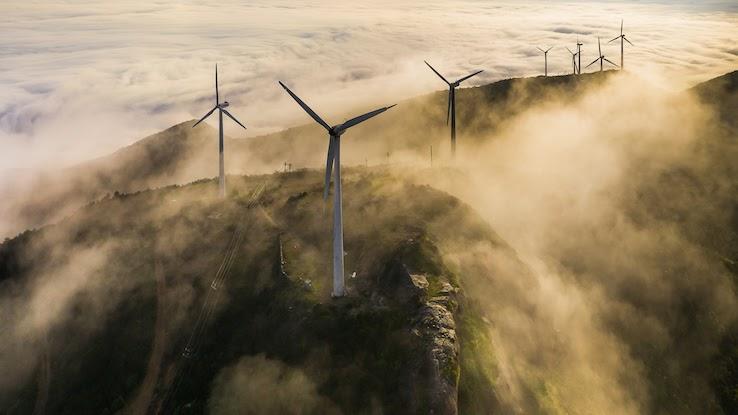
Turbines are constructive anywhere wind speeds are high. Open plains, hilltops and open up h2o are ideal locations for these machines. Producing energy with turbines doesn't generate air pollution or carbon dioxide, making it a clean source of energy. The master disadvantages of air current free energy are inconsistency (many areas don't receive constant air current), dissonance disturbances from the sounds the turbines make, the large amount of space the turbines take up and the fact that they can simply be used in certain geographic locations.
Hydroelectric Energy
If you've learned most hydroelectric energy (also called hydropower), you might associate it with dams like the Hoover Dam. Hydroelectric ability is generated past moving h2o. In the example of a dam, water runs through the structure's turbines to spin them, which creates energy for electricity. This is another clean free energy source considering it doesn't pollute the air.
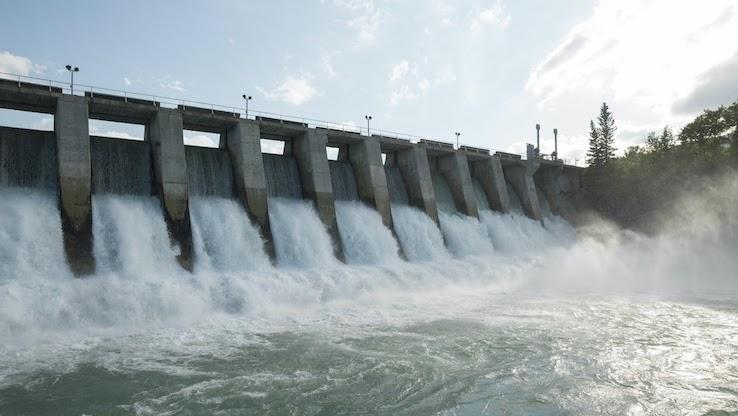
Among the top benefits of hydropower plants is their power to accumulate reservoirs of energy for later employ. This makes it possible to utilize less-reliable renewable energy sources, such as solar and current of air power, as the free energy from hydroelectric power plants can be available as a backup when those others aren't.
To create a hydroelectric ability plant, engineers have to dam a source of running water, such as a river. This can have negative effects on fish populations in the surface area, which can then affect the other animals that rely on those fish equally a food source. Disrupting the nutrient chain can have a lot of negative outcomes. Additionally, if there is a drought, hydroelectric power plants can get less reliable considering they need large quantities of water to role properly.
Geothermal Energy
The inner core of the earth is very hot — well-nigh as hot as the surface of the sunday. Because of this, heat continually rises up out of the earth'south surface. The estrus beneath the surface of the planet is chosen geothermal heat. The earth continuously produces this rut, which is what makes geothermal energy renewable.
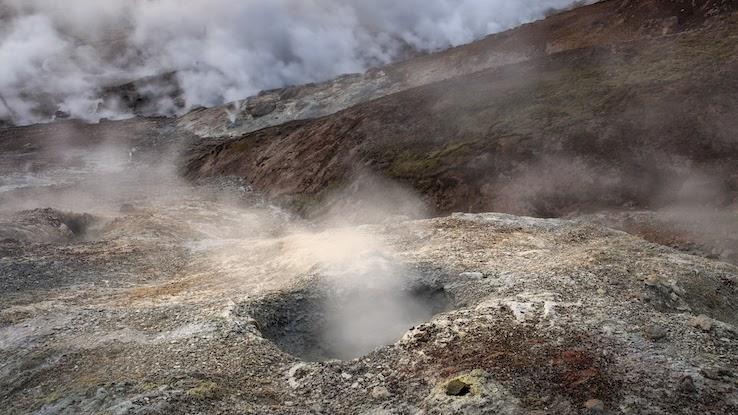
To use geothermal energy, engineers drill wells several miles down into the earth, and hot h2o or steam ascent up through these wells. The steam turns a turbine, which generates electricity, and the steam cools dorsum into h2o and then it can repeat this procedure again. The pollution created from collecting geothermal energy is minimal. Like hydropower, geothermal energy is a stable and virtually endless energy source.
The greatest disadvantage of geothermal energy is that it can only exist used in places where drilling deep into the earth is possible. In a lot of locations this isn't feasible, then engineers and companies accept no access to this renewable energy resource. Geothermal power plants are often located in areas where there are lots of volcanoes, geysers or hot springs considering the heat is more than accessible there. Also, geothermal energy can crusade earthquakes, because digging the wells to access the energy changes the earth'due south structure and creates cracks.
Biomass Energy
Biomass is material that comes naturally from plants and animals. Information technology includes trees, plants, waste from crops, animal manure, human sewage and organic solid waste like cotton, newspaper, food, wool and woods scraps. Nosotros catechumen biomass into energy in various ways. This can include burning the materials to produce rut or using chemical, thermochemical and biological conversion to produce unlike kinds of fuels. Combustion, or direct called-for biomass, is the most common way to plough biomass into energy. Ordinarily, this involves burning biomass to heat water and generate steam, which then creates electricity.
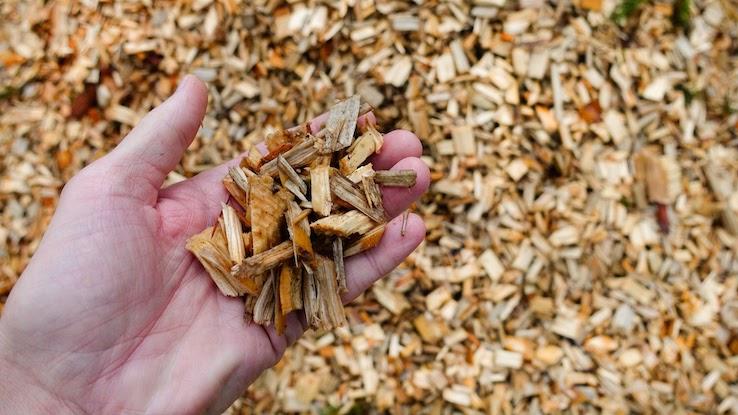
Because humans, animals and plants are always creating waste, nosotros'll probable never run out of biomass from which to produce energy. Plus, when we utilize waste product, information technology doesn't become into a landfill. All the same, there are some downsides to energy fabricated from biomass: Called-for these materials releases carbon dioxide, a greenhouse gas, into the air. It also pollutes the air with carbon monoxide. What's more, when we clear land to abound crops specifically for the purpose of creating biomass, a lot of energy and infinite are wasted. Cutting down trees to utilize for biomass is harmful to the environment, too.
Ocean or Tidal Free energy
Generating energy from the tides, waves and heat in the ocean is all the same a work in progress, but it tin can be done finer in two ways. The first type is chosen ocean thermal free energy. This uses warm water on the surface of the ocean to generate power. The 2d is ocean mechanical energy, which uses the force of the tides and waves to create ability. It'southward a consistent course of renewable energy that can fill in where the less-consistent renewable energy sources fail us.
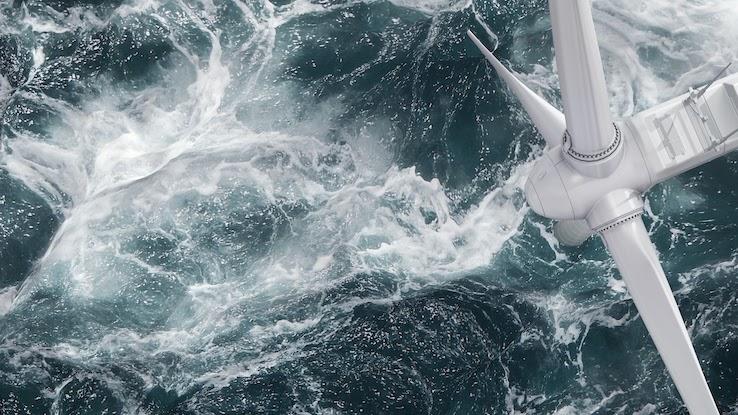
One of the nigh benign aspects of ocean free energy is its huge potential. For instance, ane mile'due south worth of wave crests along a coastline creates enough free energy to power about twoscore,000 homes. One of the disadvantages of bounding main free energy is that in that location aren't many locations around the world where people tin build tidal barrages — the names of the structures that shop ocean energy — to collect that energy. Too, the patterns of the tides dictate that ocean energy can but provide power for around 10 hours each twenty-four hour period. Especially intense waves might harm or destroy the tidal barrages as well.
Source: https://www.reference.com/science/renewable-energy-resource-types?utm_content=params%3Ao%3D740005%26ad%3DdirN%26qo%3DserpIndex
Post a Comment for "Kirubakaran a Review on Gasification of Biomass Renewable and Sustainable Energy Reviews"